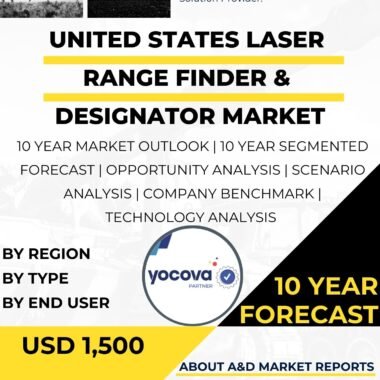Description
The South Korea laser range finder and designator market is a critical component of the country’s defense industry, providing advanced targeting and reconnaissance capabilities for its armed forces. Laser range finders and designators are precision optical devices that enable accurate target acquisition, range measurement, and designation for laser-guided munitions. These systems are essential for modern warfare, as they enhance the effectiveness and precision of weapon systems, reduce collateral damage, and ensure the safety of friendly forces. South Korea’s focus on indigenous development, strategic partnerships, and technological innovation has positioned it as a key player in the global laser range finder and designator market.
Laser range finders are used to determine the distance between the operator and a target by emitting a laser pulse and measuring the time it takes for the reflection to return. This information is crucial for accurate target engagement, as it enables weapons systems to adjust their firing parameters based on the target’s distance.
Designators, on the other hand, are laser devices used to mark or designate targets with laser energy, guiding laser-guided munitions such as missiles, bombs, and artillery rounds to their intended targets. Designators increase the accuracy and lethality of guided weapons, significantly improving the probability of hitting the desired target.
Indigenous development has been a cornerstone of the country’s defense strategy, and the laser range finder and designator market are no exception. Companies such as LIG Nex1 and Hanwha Systems have made significant progress in developing advanced laser targeting and designation systems for various military applications.
One of the key areas where South Korea has demonstrated its proficiency is in the development of laser target designators for its ground-based forces. These designators are integrated into infantry units, armored vehicles, and artillery systems, enabling precision strikes and minimizing collateral damage. Advanced designators can mark targets with high precision, even in adverse weather conditions, ensuring reliable guidance for laser-guided munitions.
Moreover, South Korea has integrated laser range finders and designators into its various military platforms, including fighter aircraft, attack helicopters, and unmanned aerial vehicles (UAVs). These systems provide enhanced targeting capabilities, enabling pilots and operators to accurately identify and engage targets from long distances. Laser designators for aircraft and helicopters play a crucial role in guiding precision-guided munitions to their targets, ensuring the successful completion of missions.
Collaborations with global technology leaders facilitate technology transfer, joint research, and the integration of foreign systems into South Korea’s military platforms. These partnerships enable South Korea to access cutting-edge technologies and reinforce its position in the global laser targeting and designation market.
Additionally, South Korea’s commitment to innovation and research and development (R&D) has driven advancements in laser range finder and designator technology. The country invests in R&D programs to improve the performance, accuracy, and capabilities of these systems. Technological improvements focus on reducing size, weight, and power requirements while increasing the robustness and reliability of laser targeting and designation devices.
As part of its broader defense industry, South Korea’s laser range finder and designator market extends beyond its domestic needs. The country actively exports these advanced systems to other nations, generating revenue and expanding its influence in the global defense market. Successful exports demonstrate the reliability and performance of South Korean-made laser targeting and designation solutions.
To ensure optimal utilization of laser range finders and designators, South Korea emphasizes training and skill development for its military personnel. Training programs focus on familiarizing operators with the operation, maintenance, and best practices for using these advanced systems in the field.
Moreover, cybersecurity is a significant consideration in the laser range finder and designator market, as these systems often incorporate digital components and may be vulnerable to cyber threats. South Korea invests in robust cybersecurity measures to protect its defense infrastructure and ensure the safety and security of laser targeting and designation systems.
In conclusion, the South Korea laser range finder and designator market play a crucial role in enhancing the country’s defense capabilities. Indigenous development, strategic partnerships, and innovation have allowed South Korea to create advanced laser targeting and designation systems that cater to the specific needs of its military. The focus on accuracy, precision, and reliability ensures that South Korea’s armed forces maintain their readiness and effectiveness in countering potential threats. As the defense industry continues to evolve, South Korea’s dedication to advancing its laser range finder and designator technology will remain essential in safeguarding its national security and maintaining its position as a significant player in the global laser targeting and designation market.




